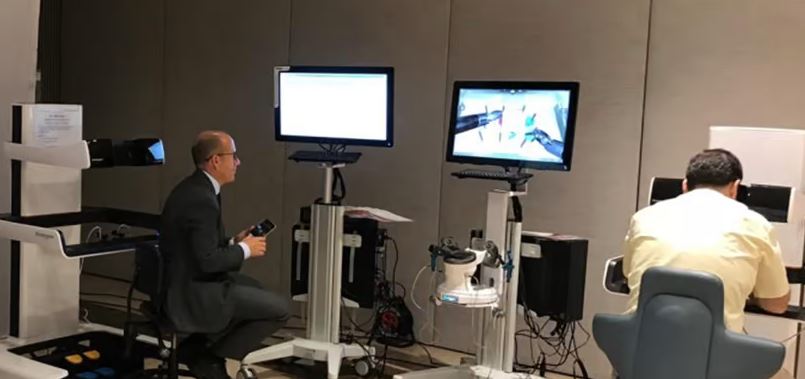University of Missouri - Columbia: Determines Space Needs with ARCHIBUS
Customer Company Size
Large Corporate
Region
- America
Country
- United States
Product
- ARCHIBUS
- AutoCAD
- Web Central
Tech Stack
- ARCHIBUS
- AutoCAD
Implementation Scale
- Enterprise-wide Deployment
Impact Metrics
- Productivity Improvements
- Cost Savings
- Customer Satisfaction
Technology Category
- Functional Applications - Remote Monitoring & Control Systems
- Functional Applications - Enterprise Resource Planning Systems (ERP)
Applicable Industries
- Education
Applicable Functions
- Facility Management
Use Cases
- Building Automation & Control
- Building Energy Management
Services
- System Integration
- Software Design & Engineering Services
About The Customer
The University of Missouri - Columbia (MU) is a prominent educational institution located in a college town with a population of about 70,000. The university itself has a student population of approximately 24,000. The Campus Facilities Space Planning and Management office, led by Scott Shader, is responsible for managing space planning activities across over 200 buildings on the main MU campus and an additional 900-plus buildings across the state. This includes four hospital campuses and fifteen agricultural experiment stations, totaling an impressive 15 million gross square feet of real estate. The university uses ARCHIBUS to manage this extensive portfolio, integrating various institutional data such as personnel, financial, and student data to perform crucial space programming studies.
The Challenge
The University of Missouri - Columbia faced significant challenges in managing its extensive real estate portfolio, which includes over 200 buildings on the main campus and an additional 900-plus buildings across the state. The university's floor plans and space inventory were stored in separate databases, leading to inconsistencies and inefficiencies. Changes made in one database were not automatically reflected in the other, compromising the integrity of the information. This disjointed system made it difficult to perform accurate space programming studies, which are crucial for an educational institution of this size and scope. Additionally, the university needed to provide accurate square footage information for Indirect Cost Recovery (ICR) and health services reimbursement for Medicare and Medicaid patients. The existing system was not equipped to handle these requirements efficiently, leading to potential financial losses and operational inefficiencies.
The Solution
To address these challenges, the University of Missouri - Columbia implemented ARCHIBUS as the central system for managing its extensive real estate portfolio. The first step was to combine the university's AutoCAD floor plans and space inventory into a single ARCHIBUS database. This integration allowed the university to see all applications and retrieve space information in one setting, significantly improving data accuracy and operational efficiency. Shader's office now maintains a Computer-Aided Facilities Management (CAFM) system, responsible for the upkeep of over 2,000 floor plans and 50,000 room records. The integrated system also facilitates the annual Space Inventory Survey, ensuring the accuracy of the data. Additionally, the ARCHIBUS system provides square footage information and floor plans for Indirect Cost Recovery (ICR) and health services reimbursement for Medicare and Medicaid patients. Shader's office uses a formula-driven projections model to calculate space needs for various departments, comparing these needs to the actual square footage currently in use. The system also supports the creation of reports that calculate the amount of square footage used for indigent care, ensuring accurate records are submitted to the government.
Operational Impact
Quantitative Benefit

Case Study missing?
Start adding your own!
Register with your work email and create a new case study profile for your business.
Related Case Studies.

Case Study
IoT platform Enables Safety Solutions for U.S. School Districts
Designed to alert drivers when schoolchildren are present, especially in low-visibility conditions, school-zone flasher signals are typically updated manually at each school. The switching is based on the school calendar and manually changed when an unexpected early dismissal occurs, as in the case of a weather-event altering the normal schedule. The process to reprogram the flashers requires a significant effort by school district personnel to implement due to the large number of warning flashers installed across an entire school district.

Case Study
Revolutionizing Medical Training in India: GSL Smart Lab and the LAP Mentor
The GSL SMART Lab, a collective effort of the GSL College of Medicine and the GSL College of Nursing and Health Science, was facing a challenge in providing superior training to healthcare professionals. As clinical medicine was becoming more focused on patient safety and quality of care, the need for medical simulation to bridge the educational gap between the classroom and the clinical environment was becoming increasingly apparent. Dr. Sandeep Ganni, the director of the GSL SMART Lab, envisioned a world-class surgical and medical training center where physicians and healthcare professionals could learn skills through simulation training. He was looking for different simulators for different specialties to provide both basic and advanced simulation training. For laparoscopic surgery, he was interested in a high fidelity simulator that could provide basic surgical and suturing skills training for international accreditation as well as specific hands-on training in complex laparoscopic procedures for practicing physicians in India.

Case Study
Implementing Robotic Surgery Training Simulator for Enhanced Surgical Proficiency
Fundacio Puigvert, a leading European medical center specializing in Urology, Nephrology, and Andrology, faced a significant challenge in training its surgical residents. The institution recognized the need for a more standardized and comprehensive training curriculum, particularly in the area of robotic surgery. The challenge was underscored by two independent studies showing that less than 5% of residents in Italian and German residency programs could perform major or complex procedures by the end of their residency. The institution sought to establish a virtual reality simulation lab that would include endourological, laparoscopic, and robotic platforms. However, they needed a simulator that could replicate both the hardware and software of the robotic Da Vinci console used in the operating room, without being connected to the actual physical console. They also required a system that could provide both basic and advanced simulation training, and a metrics system to assess the proficiency of the trainees before they performed surgical procedures in the operating theater.

Case Study
Edinburgh Napier University streamlines long-distance learning with Cisco WebEX
• Geographically dispersed campus made in-person meetings costly and inconvenient.• Distance-learning programs in Malaysia, India, and China required dependable, user-friendly online tools to maximize interaction in collaborative workspaces.• Virtual learning environment required a separate sign-in process, resulting in a significant administrative burden for IT staff and limited adoption of collaboration technology.

Case Study
8x increased productivity with VKS
Before VKS, a teacher would spend a lot of time showing a group of 22 students how to build a set of stairs within a semester of 120 hours. Along with not leaving the teacher much time to provide one-on-one support for each student to properly learn carpentry, it also left a considerable amount of room for error. Key information would be misinterpreted or lost as the class was taught in the typical show-and-tell way.

Case Study
Scalable IoT Empowering GreenFlex's Sustainable Growth
GreenFlex, a company that supports sustainable development, decarbonization, and energy efficiency, faced several challenges in its quest to expand its business. The company needed to deploy a robust and sustainable IoT technology to support its growth. It was crucial for them to monitor and control devices at customer sites in a safe and reliable manner. They also needed to integrate devices across a range of communication protocols and gather and act on data to meet efficiency targets. GreenFlex had previously built IoT capabilities into its digital platform, GreenFlexIQ, to monitor and manage customer sites remotely. However, they soon realized that they needed a new platform to support their ambitions. They needed a platform that could scale to connect more devices for production management and make it easier for the operations team to manage devices in the field.


